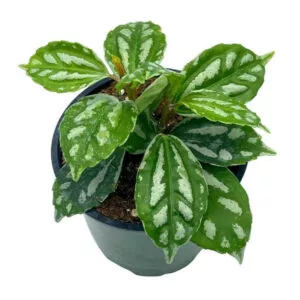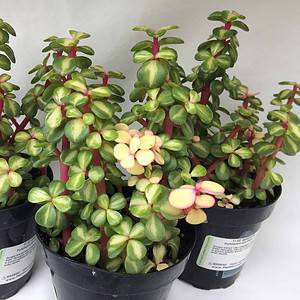No products in the cart.
Table of Contents
The Sansevieria, or reclassified named Dracaena genus, is an indoor staple plant referred to as the snake plant. Most houseplant enthusiasts know it as the mother-in-law’s tongue.
Those alluring sharp structural leaves edged with yellow are charming to look at as they survive indoors and outdoors under the right living conditions.
But the most striking of all is when the snake plants flowers. A snake plant blooms a flower! Yes, they do while the event is rare, it’s not impossible to see the display of the white flower stalks.
Wow, pretty impressive, but how do I get my snake plant to produce flowers? You can do a few things to get your snake plant flowering, and we will share some helpful tips to get started.
The Snake Plant Flower
Most snake plant cultivars flower, which can happen annually during spring and summer under the right conditions. While highly uncommon to happen, it still is possible. But according to botanists, if you have a Sansevieria trifasciata Hahnii, the likeliness that it will ever bloom will not occur.
Snake Plant Flowers Appearance and Fragrance
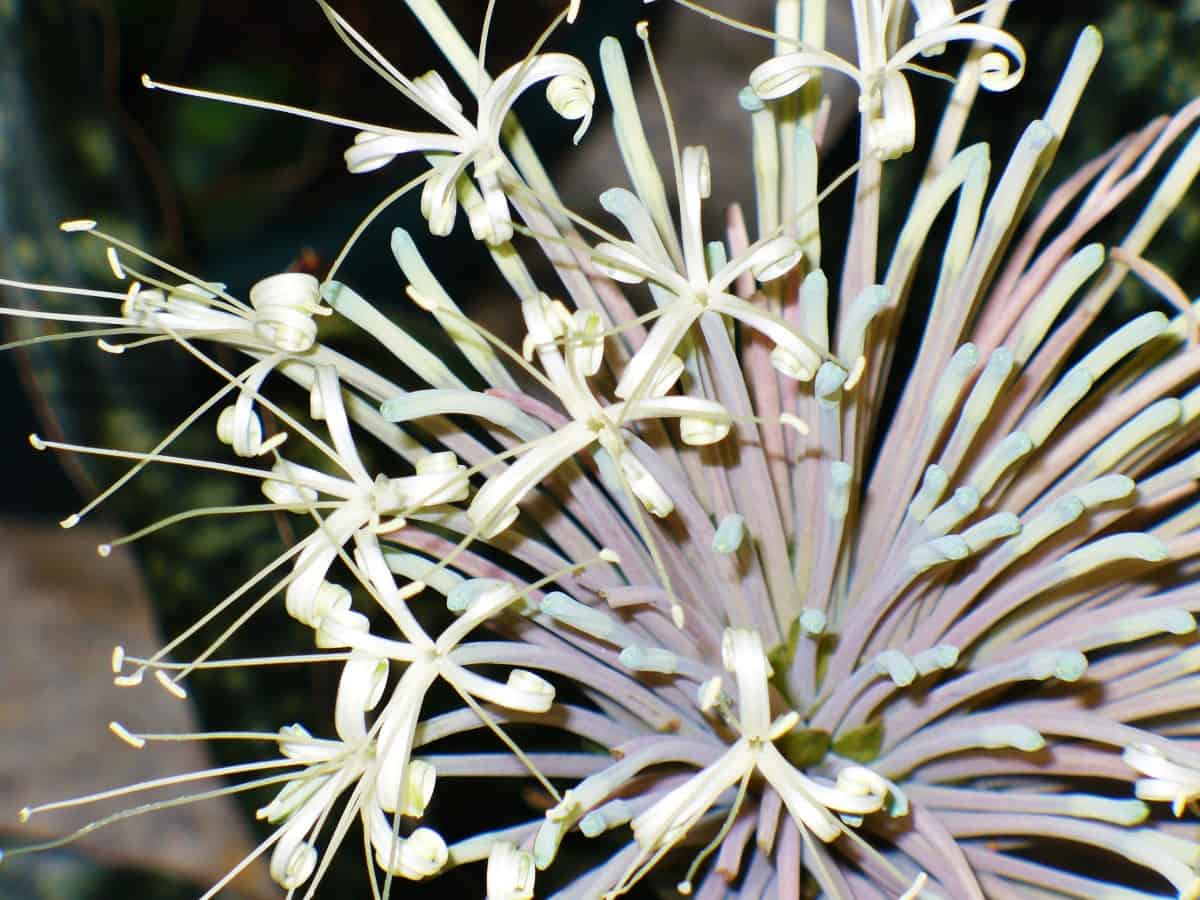
Still, depending on your succulent plant when it flowers, you will see tiny buds along a long flower stalk reaching up to three feet. On the stem, you see dozens of tubular flower buds growing in clusters with thin petals resembling lily or honeysuckle flowers.
You may find that some snake plants do not sprout stalks and the flowers bloom in clusters at the plant base. In addition, you can see that the snake plant produces different colored flowers white, yellow, cream, or greenish-white.
While the flowers are rare, you will notice a strong aroma with beauty. As mentioned earlier, in spring, a snake plant will only bloom once a year and last a few weeks, forming orange berries as the flowers die back. So, how do you trick many snake plants into blooming?
The truth is no one knows how to make Sansevieria plants flower, but several factors play an essential part. One is the age of your snake plant. Snake plants produce blooms when basic needs are provided and tricked to flower with some neglect.
How to Make Your Snake Plants Bloom
To see snake plants flower, they need a bit of stress compared to their regular care needs.
Providing The Right Light Conditions
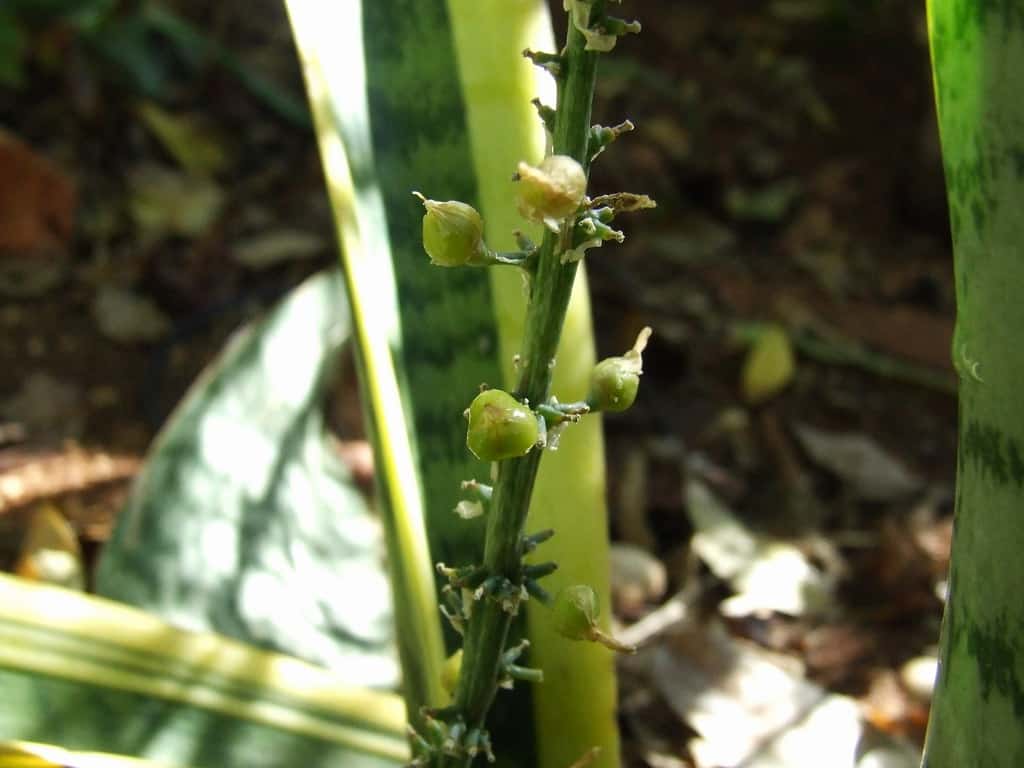
When it comes to snake plant growth, they can thrive in low light to full sun. But with a constant stream of indirect sunlight, they flourish.
So, to produce flowers, the snake plant uses a lot of energy that comes from light. Thus, move them out of that dark corner to increase the chance of flowering stalks in most species.
Take your snake plant and bring it to your east-facing window sill behind sheer curtains for some bright light during the day.
But be careful of too much direct sunlight as it can leave the foliage looking insightful.
Keep The Water to a Minimum
To induce flowering of your snake plant, it helps to ensure not to provide your plant with too much water. The mother-in-law’s tongue is semi-succulent and thrives on little water as it stores water in the leaves.
As the snake plants are drought tolerant for a short while, it does not enjoy overwatering, leaving them with wet feet. In addition, it will lead to the leaves splitting and root rot. So, some extended periods can also be detrimental.
Hence, it would help if you found the perfect balance with your water schedule during the growing season. We suggest you leave the soil dry for a bit longer before watering. Then, during winter months, your plant needs little water.
Still, in warmer months, we recommend keeping an eye on the temperature and humidity only to stress your plant out for a little while to see if the flowers begin.
Soil For Snake plants
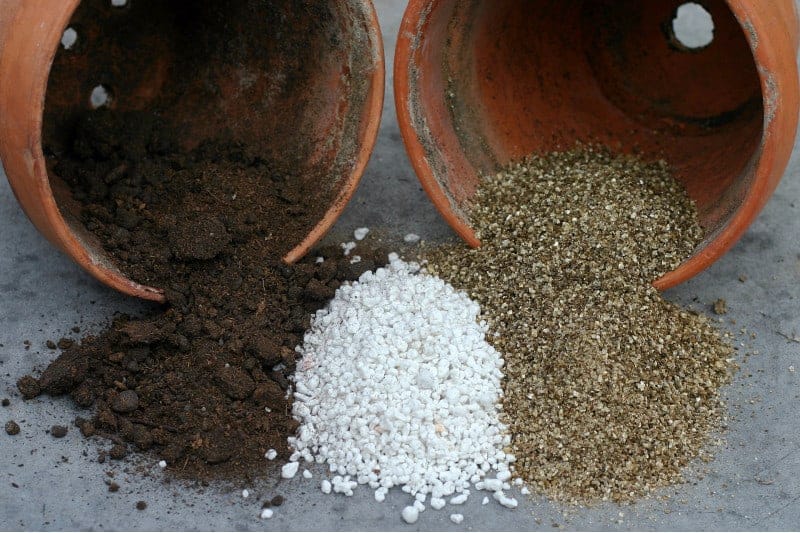
As you know, the snake plant needs light, with fast-draining potting soil, to prevent root rot. So improving the soil with ample drainage and aeration, like sand added to the potting mix, helps. Snake plants do not need added feeding, but a sprinkle of phosphorus fertilizer can help boost new shoots into flowers.
But only a little for your snake plant to bloom without causing a deficiency in the growth.
Temperature Needs
The snake plant thrives in the USDA hardiness zones 9-11 and needs overwintering during freezing temperatures to survive. The same applies to not exposing your plant outdoors before the last spring frost has passed.
So, instead of exposing your snake plants to drafts and those freezing temperatures. We suggest you expose your plants to higher temperatures or even less water as a safe bet to allow your snake plant to bloom.
What is The Age of Your Snake Plant?
To induce flowering in snake plants, the age of your plant counts; the younger your plant, the likeliness of its blooming flowers is rare. Conversely, mature plants will more likely produce flowers under the right conditions.
The age of the plant plays a prominent role in when and if your snake plants flowers. Sometimes, younger plants can bloom, but this is extremely rare.
Older, more established plants are more likely to produce blooms under the right conditions. Yet, another truth is that established plants become more root-bound, increasing stress in plants.
When snake plants become exposed to the right amount of light, they take up available space in the pot instead of standing in dark corners.
With reduced space, the plant needs to shift its energy from producing leaves to producing blooms. But take care of too much direct light as it can leave the foliage unsightly.
Bottom Line
Seeing a snake plant bloom is rare as not even many plant parents know it can bloom. So you may find the plant bloom appears out of nowhere. As snake plants need little to thrive, some gardeners say that neglect leads to healthy stress for the plant to bloom.
But we feel it takes loads of patience to meet that need to see the sweet elusive white blooms. Another important note is that the flowers produce sticky nectar attracting pests and resulting in a mess. But if you can see a snake plant bloom, it is a treat.
Frequently Asked Questions
If you are concerned that your snake plants are doomed after flowering, you need not worry. You can find some species that are monocarpic and die after producing flowers. At the same time, others are polycarpic and will flower again.
The snake plant we categorize as in between the two, as each rosette only makes a flower spike once in a lifetime. Once it does, it will not grow new foliage and will not die as the leaves remain there for years.
The rhizomes extend deep into the soil to develop new rosettes and might create new flower buds.
The flowers grow on a long stalk reaching up to three feet high. You will see the stalk covered with many flower buds in white or cream. Once the flowers open, it looks like a lily or honeysuckle bloom. The blooms have a strong fragrance, with sticky sap attracting pests.
It can take years or decades to see a snake plant produce blooms. While all variants can bloom, you have some exceptions, like the Bird’s nest plant that never blooms.
The good news is that the snake plant is not rare and is sold as an indoor plant at local nurseries. Yet, you need not look further than Plantly, as we have the Sansevieria plant collection here.
Whether you want to buy, sell or simply reach out to other plant enthusiasts, Plantly is the right place to be!
In stock In stock In stock In stock
$12.99
Sold By:
BubbleBlooms
Watermelon Pilea Cadierei, Aluminum Plant, 4 inch
Only 84 available and it’s in 1 people’s basket Rated 4.81 out of 5 based on 279 customer ratings00
Sold By:
BubbleBlooms
$59.00
Sold By:
Kazumi Nursery
Euphorbia Obesa – Baseball Plant I-200
Only 1 available and it’s in 1 people’s basket
Sold By:
Kazumi Nursery
$14.99
Sold By:
Succulent Oasis
Medium Kleinia Senecio Stapeliiformis also known as the Pickle Plant. Very different and unique plant.
Rated 4.84 out of 5 based on 352 customer ratings01
Sold By:
Succulent Oasis
$14.99
Sold By:
Succulent Oasis
Medium Succulent Plant – Portulacaria Afra Medio-Picta is a beautifully colored succulent.
Only 9 available and it’s in 2 people’s basket Rated 4.84 out of 5 based on 352 customer ratings00
Sold By:
Succulent Oasis
